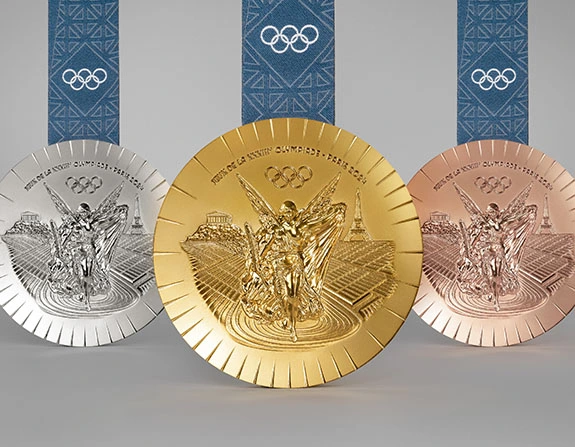Featuring 66 culturally priceless heirlooms influenced by hip-hop’s biggest stars, “Ice Cold: An Exhibition of Hip-Hop Jewelry” made its debut at the American Museum of Natural History (AMNH) in New York City this past Thursday.

The exhibition spotlights pieces worn by Slick Rick, A$AP Rocky, Nicki Minaj, The Notorious B.I.G., Bad Bunny, Erykah Badu, and many others, and is timed to coincide with The Big Apple’s celebration of hip-hop’s 50th anniversary.
Inspired by Vikki Tobak’s 2022 coffee-table book of the same name, “Ice Cold” is “a love letter to hip-hop, New York, and all the ways that hip-hop and jewelry have changed everything,” the author and guest curator told westsiderag.com.
“Bringing the ‘Ice Cold’ exhibit to the American Museum of Natural History is a testament to the cultural significance of this art form and culture,” said Tobak. “It’s time to celebrate the artists, jewelers, craftsmen and everyday people who contributed to the storied history of hip-hop jewelry. This exhibit not only pays homage to hip-hop’s roots with pieces from Biz Markie and Jam Master Jay, for example, but also highlights its enduring impact on style and society with pieces from contemporary artists like Tyler, the Creator, A$AP Rocky, and FERG.”
“Ice Cold” chronicles the evolution of jewelry in hip-hop over the past five decades, starting with the oversized gold chains that were embraced by rap’s pioneers in the late-1970s and moving through the 1990s, when hip-hop’s popularity exploded and artists sported record-label pendants sparkling with diamonds and platinum.
The introductory case in “Ice Cold” features emblematic jewelry from some of hip-hop’s most legendary artists, including a glittering crown, eye-patch, and a five-foot-long chain from Slick Rick, a senior advisor for the exhibition, who pioneered the royal motif in hip-hop.
Other pieces in this case demonstrate how artists of different eras shaped hip-hop’s visual identity through jewelry styles signifying authenticity and success, including an Adidas necklace from Jam Master Jay of Run D.M.C., made in honor of the hit 1986 song “My Adidas,” which led to an historic endorsement deal between the group and the athletic company; Nas’ diamond-encrusted “QB” pendant, which pays homage to the Queensbridge Houses in Queens, NY, where he grew up; and a multi-colored, fully-articulated LEGO mini-figure pendant commissioned by A$AP Rocky, one of the younger generation of artists moving hip-hop jewelry in new directions.
“Ice Cold: An Exhibition of Hip-Hop Jewelry” will run through January 5, 2025, at the Melissa and Keith Meister Gallery, located in the museum’s new Allison and Roberto Mignone Halls of Gems and Minerals. “Ice Cold” is included with general admission, which is “pay what you wish” for residents of the New York Tri-State area.
The museum, which features a world-renowned mineral and gem collection — including two of the largest amethyst geodes on public display, the legendary 563-carat “Star of India” sapphire, the 9-pound almandine Subway Garnet and the 632-carat Patricia Emerald — is located on Central Park West, between West 77th and West 81st streets.
Credit: Photo of Slick Rick’s crown, eyepatch and chain by Alvaro Keding/© AMNH.





















